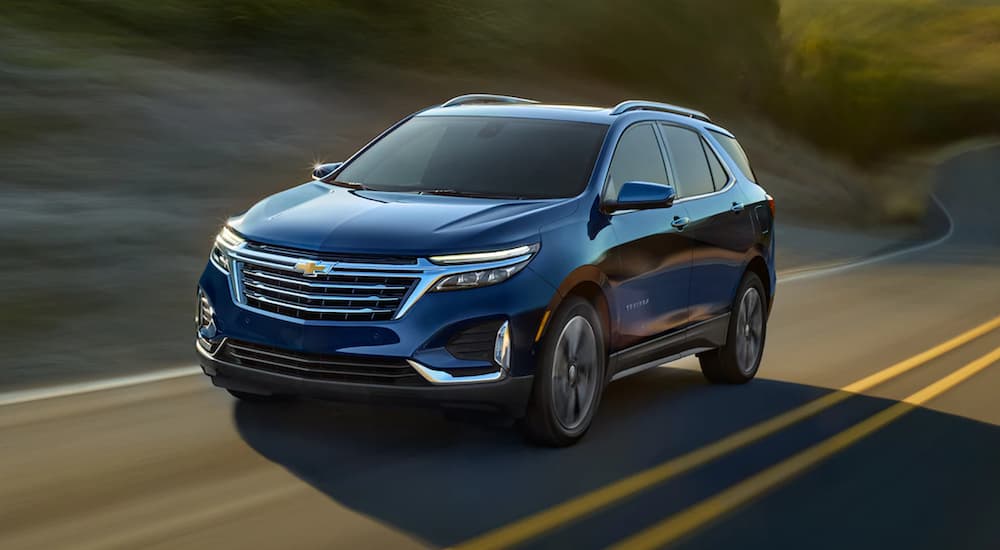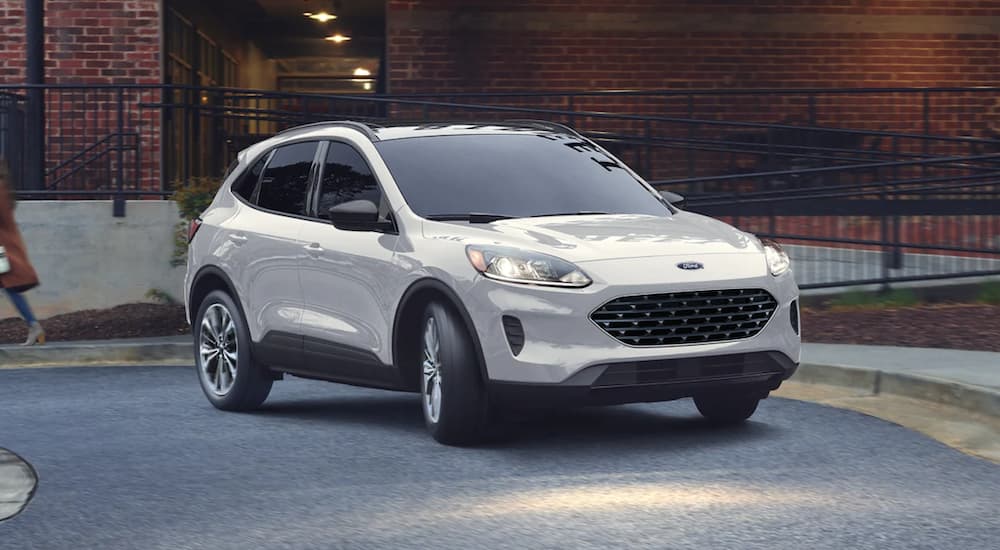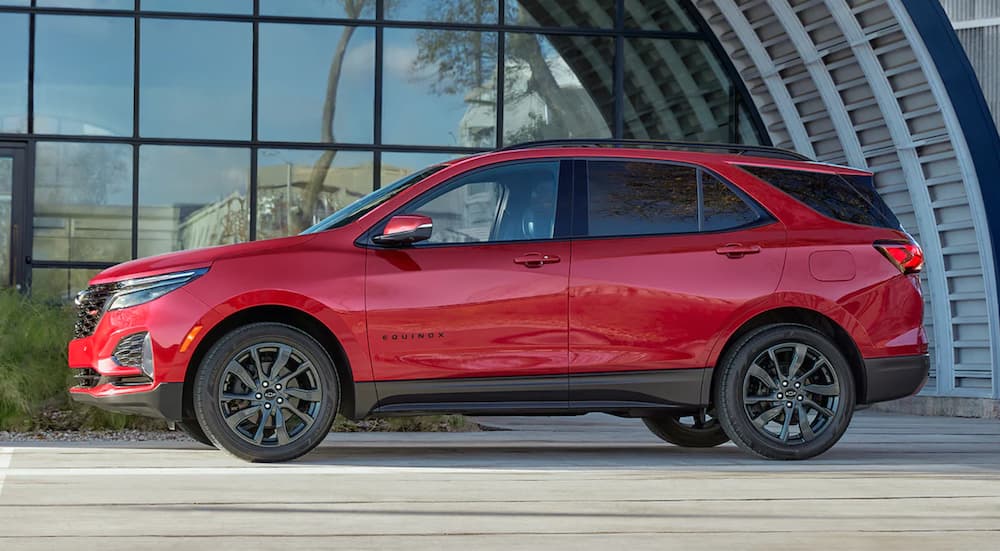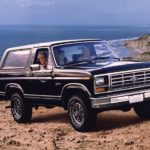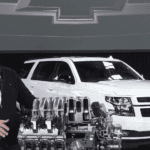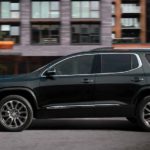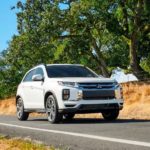With the number of SUVs available to you on the market today, there is no need for you to settle. As long as you know what you want and need, you can find a model built for you with a bit of legwork. But what if you don’t know what you’re looking for, or how to distinguish the differences between two very similar models like the 2022 Chevy Equinox vs 2022 Ford Escape? You are not alone if you feel ovewhelmed when you walk into a dealership showroom or pull up the vehicle inventory on a dealership’s website. Many people have no idea where to start their journey of looking for their next SUV, which is why you should consider five things when looking for your next SUV.
#1 Budget
Knowing your budget is essential to successful car buying in general. Nobody wants to waste their time or energy looking at vehicles they could never afford. Sure, it’s great to daydream, but in reality, you need to know what your budget consists of so you know where to begin your search.
One of the luxuries of buying an SUV is its affordability. An SUV provides versatility with both luxury and performance, offering a blend of qualities inspired by those found in a truck and a sedan. When you combine the ultimate package of capability and convenience with a price that can fit any budget, it’s no wonder SUVs are taking over the market.
Unfortunately, if you’re looking primarily for the cheapest SUV and comparing brands already known for their affordability, like the 2022 Ford Escape versus the 2022 Chevy Equinox, you will need to look beyond an economical price and focus on what features are important to you. As great as it is to know your budget and have a starting point for your search, this is only the beginning. Setting your price limit is meant to guide you in the direction you need to be looking. It is not meant to be the deciding factor alone, even if you are a seasoned bargain shopper.
#2 Size
Another benefit of buying an SUV is its size. These vehicles are usually small enough to easily maneuver in tight spaces, whether in the parking lot or on the city streets, but spacious enough on the interior, offering plenty of passenger seating and interior cargo storage. If someone was looking for a vehicle for their family, this would be one of the essential qualities used as a deciding factor, and rightfully so. If you’re looking to seat more than six passengers in your SUV, the last thing you’re going to want to do is to look at the small subcompact SUVs with only two rows of seating and a maximum of five seats, which includes the driver’s seat.
Let’s not forget the difference in interior cargo space with smaller SUVs versus larger ones. Even if you are a solo driver who spends most of your time commuting long distances or going on vacations and work trips, size will matter. You may require room for whatever essential belongings you will need for your trip, which means that a large SUV will work best for you because even though you’re not utilizing that extra seating for passengers, you can fold down those seats and use that extra space for storage.
Size may be an essential part of your comfort and convenience level when it comes to the interior of your SUV, but it is also critical to your vehicle’s capabilities. Many of your small SUVs, classified as crossovers, are built on a unibody design, meaning the frame and the body are one component. On the other hand, Larger SUVs are built similar to a truck, with their frame and body built as two separate components—known as a body-on-frame design. While the unibody SUVs drive smoother and handle like a car, the body-on-frame SUVs allow for better capabilities similar to those of a truck, like towing. Determining your SUVs desired capabilities and performance will help you decide whether or not you need to look for a crossover or a true SUV.
#3 Performance and Capability
Body-on-frame SUVs may offer better capabilities than unibody crossovers. In some ways; however, there are crossovers capable of towing—like both models in our comparison of the 2022 Chevy Equinox vs the 2022 Ford Escape. Sure, their towing capacity may not be as much as a body-on-frame SUV, but they can still provide drivers with the option to tow smaller weights. A vehicle’s performance is just as important as the comfort and convenience of the interior. Both performance and capability go hand-in-hand with one another, because the engine and drivetrain together give your vehicle its fuel economy and the ability to perform on the road, off-road, in any weather, and also provide your vehicle with the strength to tow.
When researching the performance and capability specifications of a vehicle, you want to have a basic understanding of what all the numbers mean. Sure, towing capacity is simple—it is the towing weight limit. But do you understand how horsepower and torque work? Although it may be assumed that you would want higher numbers for each, that is not necessarily the case.
The higher the horsepower, the greater the speed your vehicle will reach; while the greater the torque allows your vehicle to get up to speed quickly. Both are great in higher numbers if you are building a race car, but if you are looking for an SUV that performs well off-road, you need to focus on higher torque numbers, which give your vehicle the strength to power through rough times terrains with ease. The same goes for towing—more torque means more strength. As you search for your perfect SUV, you need to consider how both horsepower and torque contribute to your SUV’s performance and compare it to your expectations.
Having engine and drivetrain options to choose from is another great aspect to look for when comparing models. The more engine options there are, the more likely it will be for you to find a model that will work best for your needs, whether you’re looking for the best fuel efficiency, towing capacity, or off-road capability. Additionally, without all-wheel or four-wheel drive, taking your SUV off the pavement may leave you stranded in the wilderness until roadside assistance or a towing company can come out to assist you. So, when you are looking for an SUV built for you and your lifestyle, performance and capability should be crucial components for you to consider.
#4 Technology
Driving on the road today is nothing like it used to be. Previously, there were no cell phones that needed to be connected to the vehicle so that you could remain hands-free. People used paper maps rather than a digital in-vehicle GPS. There wasn’t even satellite radio. The technology found in vehicles has come a long way over the years. But when you are trying to find your next vehicle, there’s more than just GPS and cell phone connectivity to compare. Some models provide WiFi hotspot capability, wireless smartphone charging, and even apps available for your smartphone and other devices that allow you remote access to your vehicle to start it or unlock and lock the doors without being physically there.
The vehicle’s technology doesn’t end with the obvious features for convenience, though. Other advanced features have also evolved due to new technologies like heated and ventilated seating, climate control, power-folding seats, and much more. More importantly, another aspect that has evolved with the advancements of technology is safety. And when you are on the road, safety should always be your number one priority.
#5 Safety
With advancements in technology, the safety of the vehicles we drive today has increased, giving you even more confidence when you head out onto the road. Researching safety features for your next SUV will include more than just looking for the models with the best crash test ratings or the top picks and most awards received from the IIHS (Insurance Institute for Highway Safety). You will now need to compare driver assistance technologies with each model.
Each brand of vehicle offers its own version of driver assistance technologies. Some come standard with every model, others only provide a few with their base models, and the rest with their top-of-the-line, more expensive models. However, most offer these driver-assist technologies to alert you when a collision seems inevitable while also manually assisting in braking or steering the vehicle to help avoid a crash. Some include lane-keeping assist, parking assist, blind-spot monitoring, automatic high beams, and camera views of either just the rear of the vehicle or a 360-degree view around your SUV. The more driver-assist features that come with your vehicle, the lesser the chance you’ll have a collision because you’ll be driving with a co-pilot built into your SUV. With a lesser risk of a collision, the lesser weight will be on your shoulders, allowing you to enjoy the drive that much more.
Have You Started Your Search Yet?
Searching for your next SUV will be a daunting task if you don’t know what to look for and how to compare similar models. With the SUV segment being one of the most popular in the industry, with a wide range of models from all brands for any budget and any lifestyle, you won’t have much choice but make your own model comparisons. By keeping these five things in mind while SUV hunting, your journey to find the SUV built for you will be much more pleasant and possibly even enjoyable, which is how any car-buying experience should be. If you haven’t started your search yet, start a comparison of two similar models like the 2022 Chevy Equinox vs the 2022 Ford Escape. Their unique features will help you conduct a more in-depth search and help you uncover what’s important to you in an SUV.
